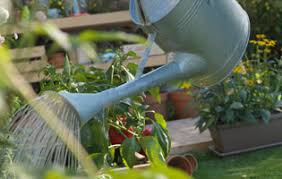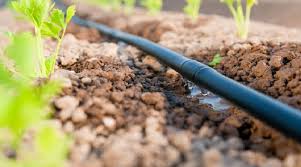Your vegetal patch step by step.
- Profe Javi

- Apr 2, 2019
- 3 min read
Updated: Jun 7, 2022
(Tu huerto ecológico paso a paso)

1º First Step: find the place.
(Haz click en las palabras que no conoces)
It is very important to find a good place for the vegetable patch. It must be close, so you can water the plants everyday. It can be in your garden, in a terrace or in your school.
Here you have some examples.
Garden Terrace School
(Jardín) (Terraza) (Colegio)
Terrace School My Garden
(Terraza) (Colegio) (Mi jardín)
As you can see in the last picture, my vegetable patch is in my garden.
(Como puedes ___ en la última_____, mi ___________ está en mi _______).
(La______ persona de __ _____ es mi _____)
To make a vegetable patch is a perfect activity to do together with your family.
(Hacer un _____________ es una ______ _______ para hacer junto a ____ _______).
_______________________________________________________________________
It must be a sunny place
- Fill in the gaps: (Debe ser un lugar S _ L _ _ D O)

2º Second Step: find your time.
Time required: At the beginning, you will need more time to prepare the place.
Then, you only need the time to water the plants and take care of them. You can also use an irrigate/watering system.
Your time Watering can Watering system
(Tu tiempo) (Regadera) (Sistema de regadío)
Clock
(Reloj)
3º Third step: Prepare the place.
Once you have the place, you have to prepare it to plant on it.
(una vez que ___ el ______, tienes que ________ para ____ en él.)
Preparing the land.
Some tools can be dangerous, so you must prepare the land with the help of your parents or your older age brother.
(Debes pedir ayuda a tus padres o hermano mayor de edad, porque algunas herramientas pueden ser peligrosas)

(__ ___ fertilizar la ____ para hacerla más rica)
Aclaración: Para fertilizar la tierra se usa abono, fertilizante o compost. Se mezcla con la tierra hasta que toda la tierra tiene el mismo color.
When you mix the land, you can find plastics and litter that contaminate the land. You must take them and recycle them.
(Cuando mezcles la tierra, puedes encontrar plásticos y basura que contaminan la tierra. Debes cogerlos y reciclarlos.)

4º Forth step: Let´s plant!
(¡Vamos a plantar!)
You can buy the seeds or the little plants.
(__ ___ comprar las semillas o las plantas pequeñas)
Distance between plants.
(________ entre ______.)
Advice in SPANISH: La mayoría de las plantas deben plantarse a 30 cm unas de otras. Tomo como ejemplo el tomate, ya que es la planta de las fotos. Es, aproximadamente, el espacio entre los pies de una persona adulta estando de pie.
How to plant each one of them:
(_____ plantar cada una de ellas:)
1º. Select the exact place . 2º Make a hole like this. 3º Put the plant inside
(_____ __ lugar ____) . (Haz un agujero como éste) (Pon la planta dentro)
4º Carefully remove the shovel 5º Make a bit of pressure on the land around.
(Quita la pala cuidadosamente) (____ un poco de presión en la ___ de alrededor.)
He plantado: (Haz click en las palabras que no entiendas.)
Eggplant Pepper
Berenjenas Pimientos

T O M A T O E S
_______________________________________________________
L E T T U C E
L E C H U G A
_______________________________________________________

Courgette/Calabazín
_______________________________________________________
5º Fifth step: Take care of the plants
(Cuida las plantas)

Happy plants growing Lettuces getting bigger The first tomato flower
_______________________________________________________
_______________________________________________________
Animals of my vegetable patch.
Birds: Insects:
Lettuces growing fast













































































Comments